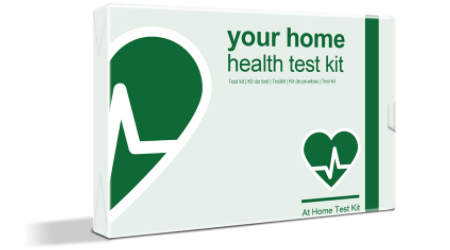Lesser known than common allergies like tree nuts or milk, lupin is still considered one of the 14 main allergens. Found increasingly in gluten-free and high-protein foods, lupin is an emerging allergen that can cause severe reactions.
If you’ve noticed unusual reactions to specific foods containing gluten, you might have a lupin allergy. Similar to other allergies, it triggers an allergic reaction, causing symptoms like wheezing, swelling, and itchy hives.
What is Lupin Allergen?
Lupin allergen refers to proteins found in lupin seeds and flour, which can trigger allergic reactions in susceptible individuals. Lupin, a legume related to peanuts and soy, is increasingly used in gluten-free and high-protein foods.
Allergic reactions can range from mild symptoms, such as hives, itching, and gastrointestinal distress, to severe anaphylaxis, characterised by difficulty breathing, swelling, and a drop in blood pressure.
Cross-reactivity is common in individuals with peanut allergies. Due to its allergenic potential, lupin must be clearly labelled in food products to alert those with allergies.
What is a Lupin Allergy?
All allergic reactions work on the same underlying principles. When an allergen, in this case, lupin, comes into contact with certain people, it causes an immune response. The immune system wrongly flags the allergen as a foreign invader, marshalling its forcing.
White blood cells are called to the frontline to form a defence, and histamine floods the bloodstream. It’s histamine that causes many of the classic symptoms of an allergy, such as swelling, itching, and a rash.
In individuals with a lupin allergy, consumption or exposure can trigger symptoms ranging from mild to severe. Mild symptoms include hives, itching, and gastrointestinal distress, while severe reactions can involve anaphylaxis, characterised by difficulty breathing, swelling of the face or throat, rapid heartbeat, and a drop in blood pressure.
Symptoms of Lupin Allergy
Suspect you have a lupin allergy? Like other allergic reactions, the symptoms are caused by the release of histamine. Unlike a contact allergy, your symptoms may feel more systematic because the lupin allergen was ingested.
Look for these signs:
- Nausea
- Vomiting
- Diarrhoea
- Abdominal pain
- Wheezing
- Coughing
- Shortness of breath
- Nasal congestion
- Hives
- Itching
- Swelling (particularly of the face, lips, and tongue)
- Eczema
Anaphylaxis occurs in the most severe cases. It involves a sudden drop in blood pressure and a closing of the throat. The tissue in the throat swells to the point that the person can no longer breathe. Symptoms include rapid or weak pulse, paleness or blue lips, difficulty breathing, and dizziness or fainting.
Seek immediate medical attention if you suspect someone is going into anaphylaxis. If possible, inject them with an EpiPen (see below).
Getting Tested
Suspecting a lupin allergy isn’t proof. So, how do you know for sure without continually eating something that’s harming you? The obvious answer is an allergy and intolerance test.
How do they work? Allergy and intolerance tests analyse a small sample of blood for specific antibodies. If you remember back to Biology class, antibodies are produced whenever the body comes into contact with a foreign invader. The particular shape of the antibody relates to the allergen.
IgE antibodies are usually released in an allergic reaction, while IgG antibodies are related to food sensitivities. By testing for several of the most common allergens, you can get to the bottom of your food problem.
That way, you can know what to avoid going forward.
Treating Lupin Allergy
Unfortunately, there is no known cure for an allergy. Some research has looked at gradually reintroducing an allergen to help build up a person’s tolerance. While extremely slow to complete, such tolerance-building programs have some efficacy. But most people don’t have the time. Nor is it safe for people with a severe allergy to keep consuming something so dangerous – it could trigger anaphylaxis!
The only answer is to completely eliminate lupin from your diet. That’s not always easy. Try these helpful tips:
- Read Labels Carefully: Always check ingredient lists on food packaging for lupin or lupin-derived ingredients, especially in gluten-free and high-protein products. In Ireland, lupin is one of the 14 main allergens. That means, legally, food-related companies must highlight lupin in ingredient lists, making it easier to spot.
- Ask About Ingredients: When dining out or buying unpackaged food, ask the staff if lupin is used in any dishes or baked goods to ensure it is not present. As before, food businesses are legally required to disclose lupin in their foods.
- Choose Certified Products: Opt for foods that are certified allergen-free or specifically labelled as free from lupin to reduce the risk of accidental exposure. This is also a sensible option if you’re going around to somebody’s house – particularly someone with a gluten sensitivity.
World-Class Allergy and Intolerance Testing
Ready to get tested? If you think you have a lupin allergy, we’ve got tons of test options to help out. Our allergy and intolerance tests look for up to 117 items, depending on how comprehensive you want to be. These include factors in your food, drink, and environment.
Each of the tests is lab-certified to ISO 9001. Use the test kit to provide a small sample of your blood, and we’ll send you the results within 5-7 days. Try our Allergy and Intolerance Testing Kits today.


